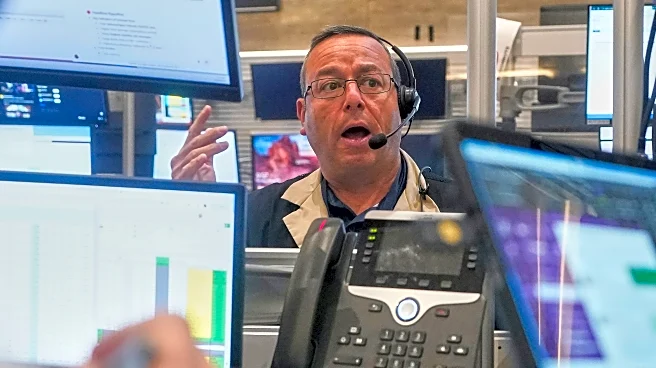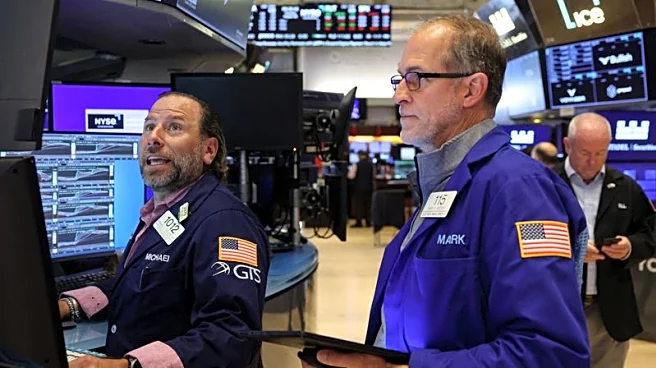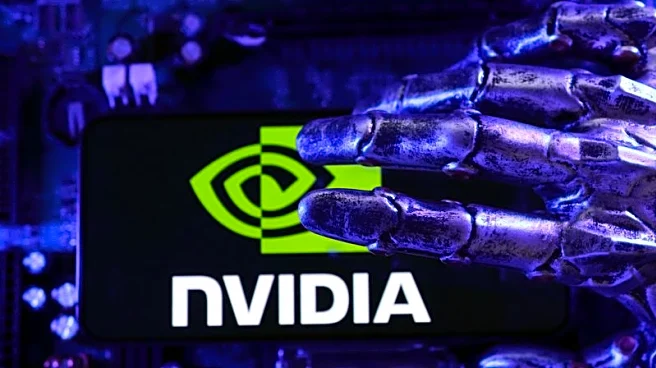What's Happening?
Nvidia has announced a profit of $26.4 billion on record revenue of $46.7 billion for the second quarter. Despite these impressive figures, Nvidia's shares fell by 1.4 percent, continuing a recent downward trend. The decline in share value is attributed to a decrease in data center revenue, which has raised concerns among investors about the sustainability of Nvidia's growth amidst increasing competition and potential overvaluation in the AI sector. Concurrently, the U.S. economy showed stronger-than-expected growth, with GDP increasing by 3.3 percent in the second quarter, up from an initial estimate of 3.0 percent. This growth was driven by improvements in investment and consumer spending, as well as a reduction in imports following tariff hikes by President Trump.
Why It's Important?
Nvidia's earnings report is significant as it highlights the ongoing volatility in the tech sector, particularly in AI-related industries. The company's performance is crucial for tech stocks, which have seen substantial gains recently. The mixed market reaction underscores investor concerns about the sustainability of growth in the AI sector. Additionally, the stronger-than-expected U.S. GDP growth suggests resilience in the domestic economy, which could influence Federal Reserve decisions on interest rates. The Fed is considering further rate cuts to stimulate economic growth, but the robust GDP figures may limit the scope for such cuts.
What's Next?
The Federal Reserve is expected to make a decision on interest rates at its September meeting, with a potential cut of 25 basis points. However, the stronger domestic demand indicated by the GDP report may reduce the likelihood of significant rate cuts over the next year. Investors will be closely monitoring the release of key inflation data, which could further impact the Fed's outlook on rate adjustments. Nvidia's future performance will also be watched closely as competition in the AI sector intensifies.
Beyond the Headlines
The developments in Nvidia's earnings and U.S. GDP growth reflect broader economic trends, including the impact of trade policies and technological advancements. The reduction in imports following tariff hikes highlights the ongoing effects of trade tensions on the U.S. economy. Meanwhile, the AI sector's growth raises questions about potential market bubbles and the long-term sustainability of tech-driven economic expansion.













